Photos:: Enrique’s Journey | Chapter One
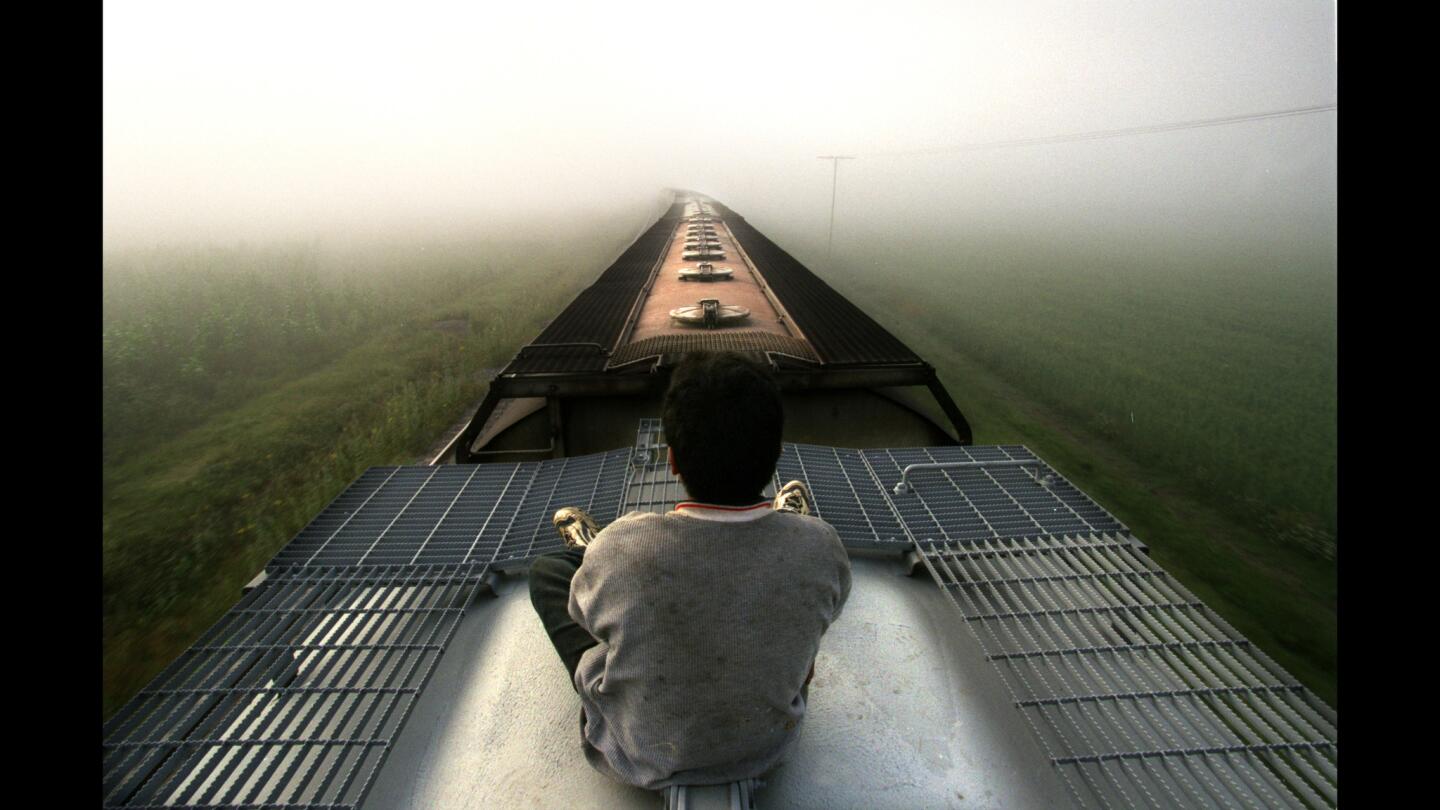
A Central American youth rides a freight train through Mexico toward the United States. Each year, thousands of children cling to the tops and sides of trains as they journey north in search of a parent. Some say they need to find out whether their mothers still love them. (Don Bartletti / Los Angeles Times)
The Boy Left Behind
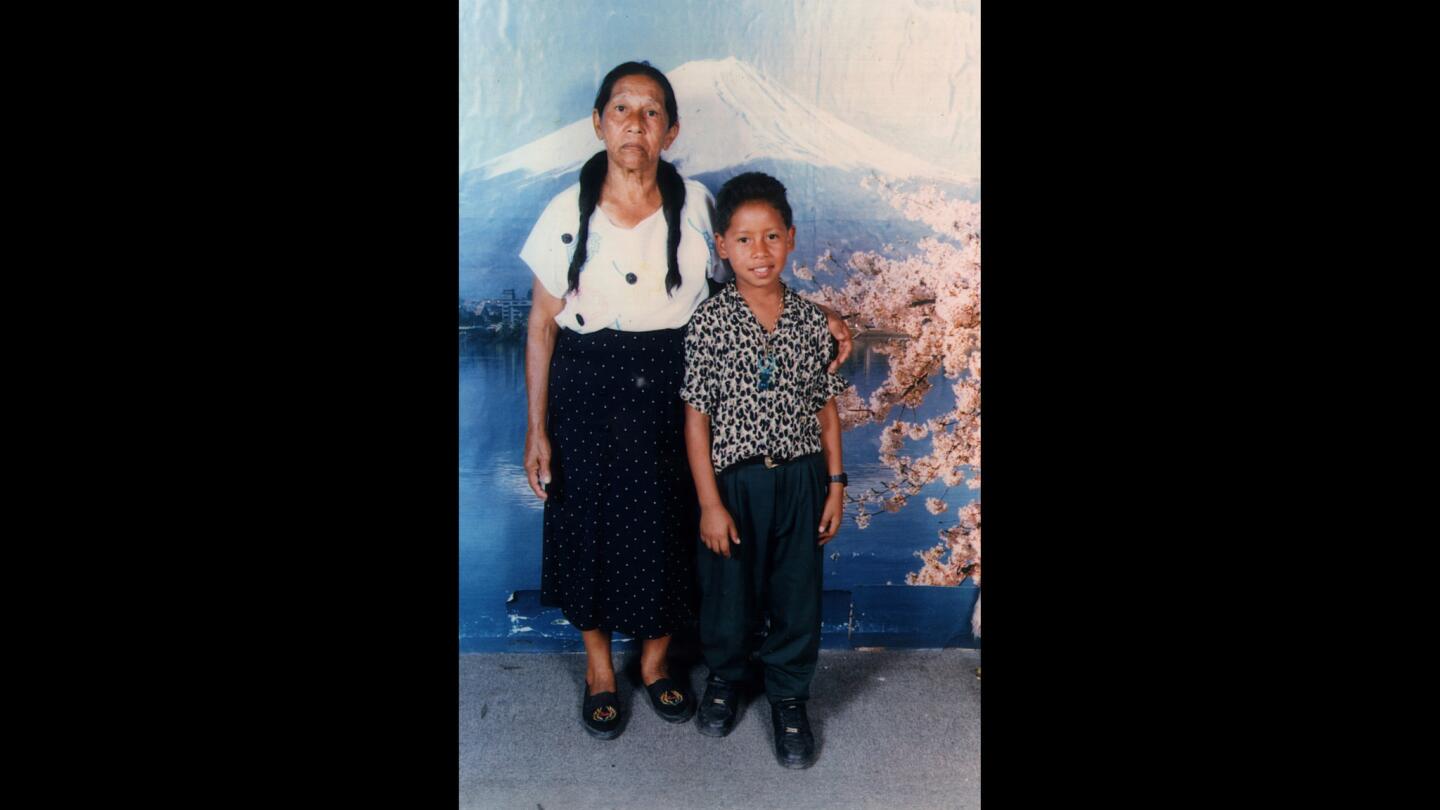
Enrique with his grandmother Motino in Honduras. (Don Bartletti / Los Angeles Times)
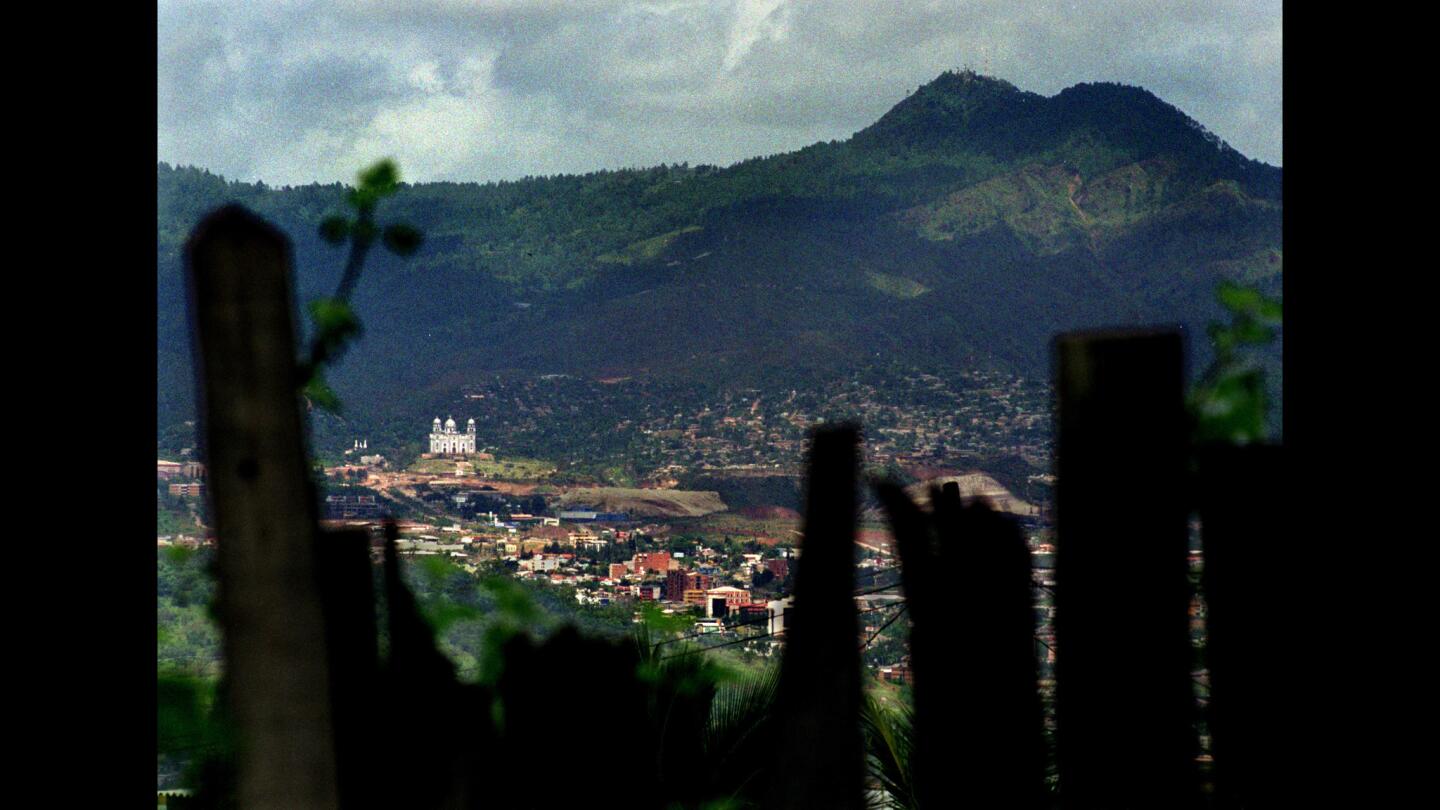
The view through a fence at the home where Enrique lived with his paternal grandmother. Across the valley were his sister and the only phone on which they occasionally talked to their mother. Enrique ended the strained calls by saying, “I want to be with you.” (Don Bartletti / Los Angeles Times)
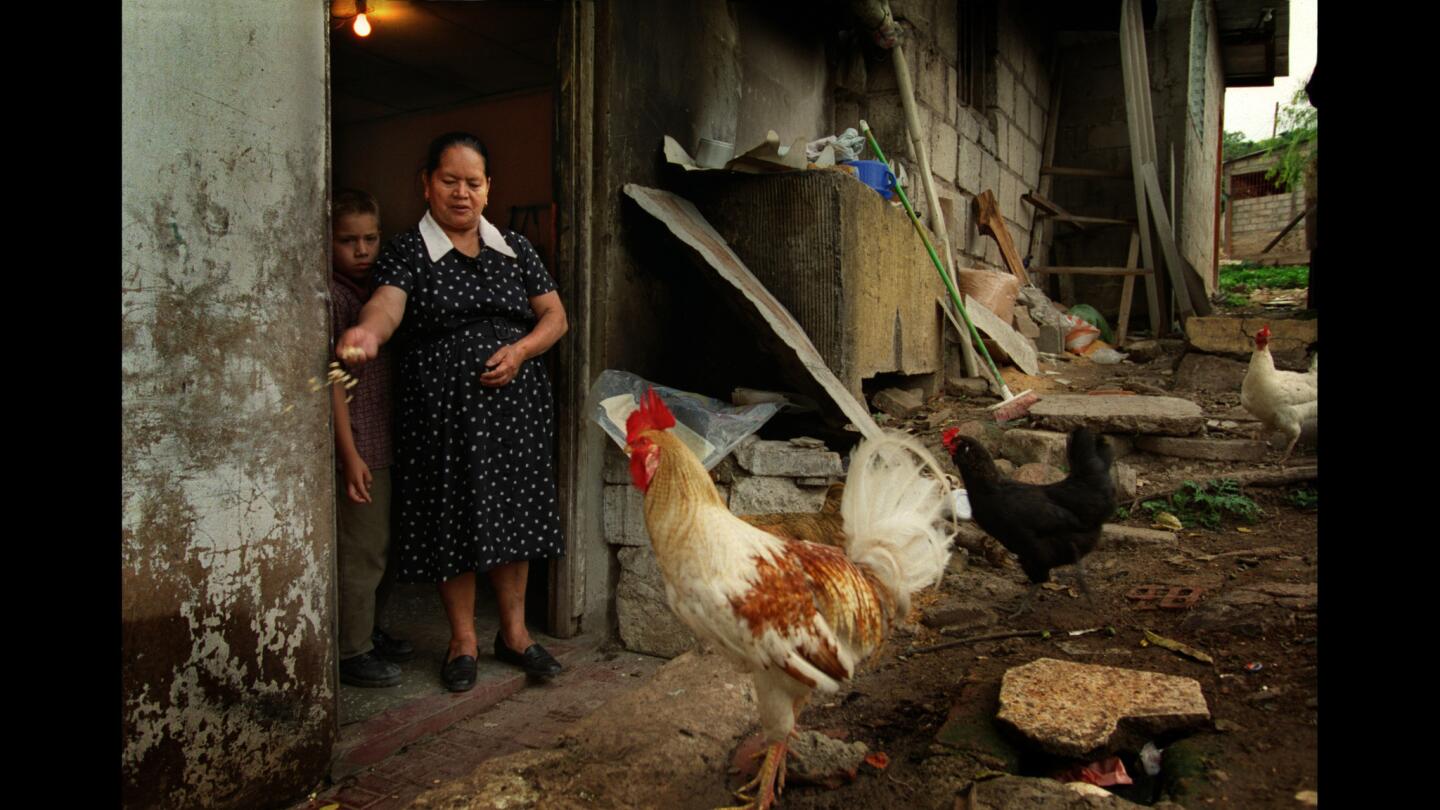
Enrique’s maternal grandmother, Agueda Amalia Valladares, throws grain to chickens at her Honduras home, where Enrique lived until his mother left. Afterward, he was passed from relative to relative, every year waiting for her return. (Don Bartletti / Los Angeles Times)
Advertisement
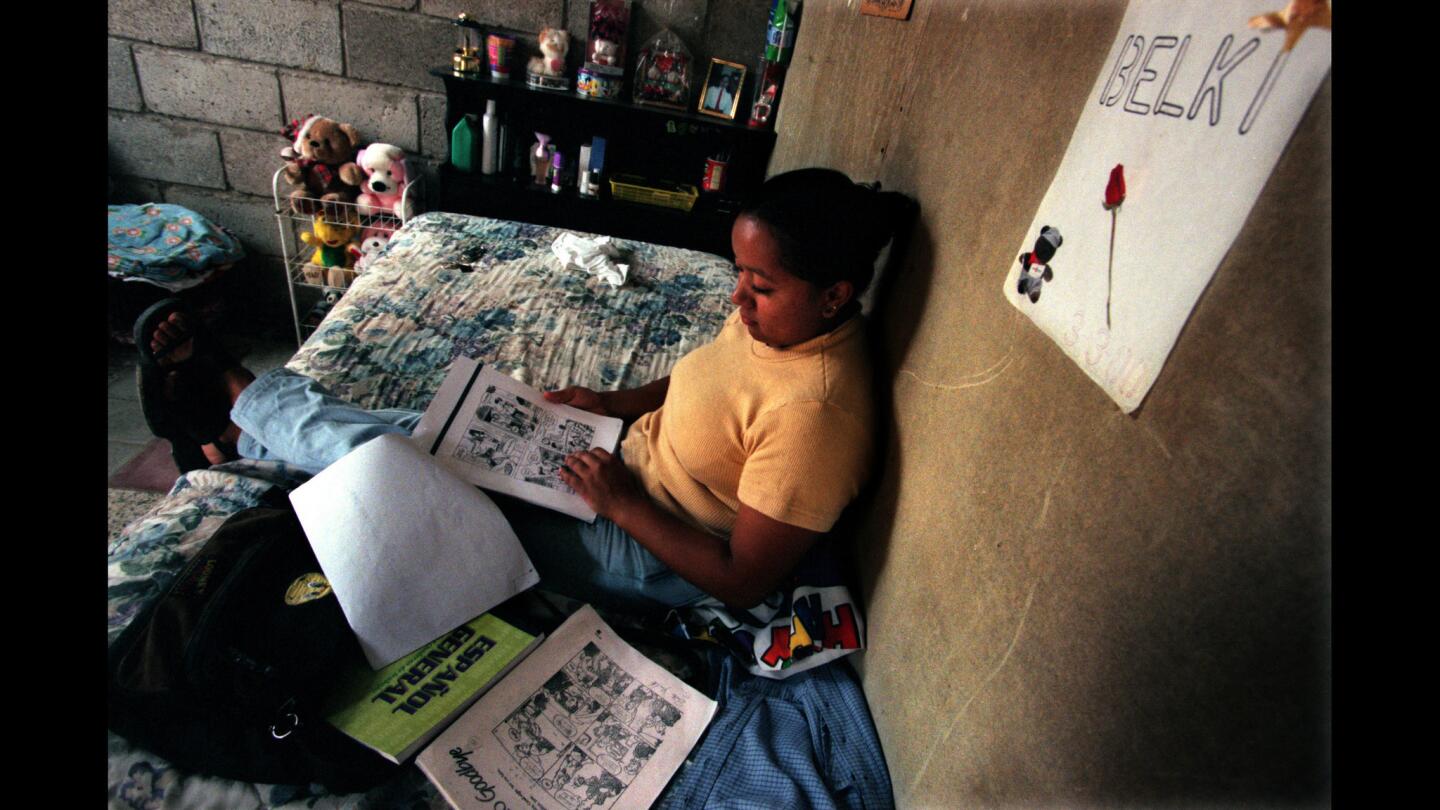
Enrique’s sister Belky studies, a luxury made possible by money sent from the U.S. An aunt worries that the girl struggles with a question: How can I be worth something if my mother left me? (Don Bartletti / Los Angeles Times)
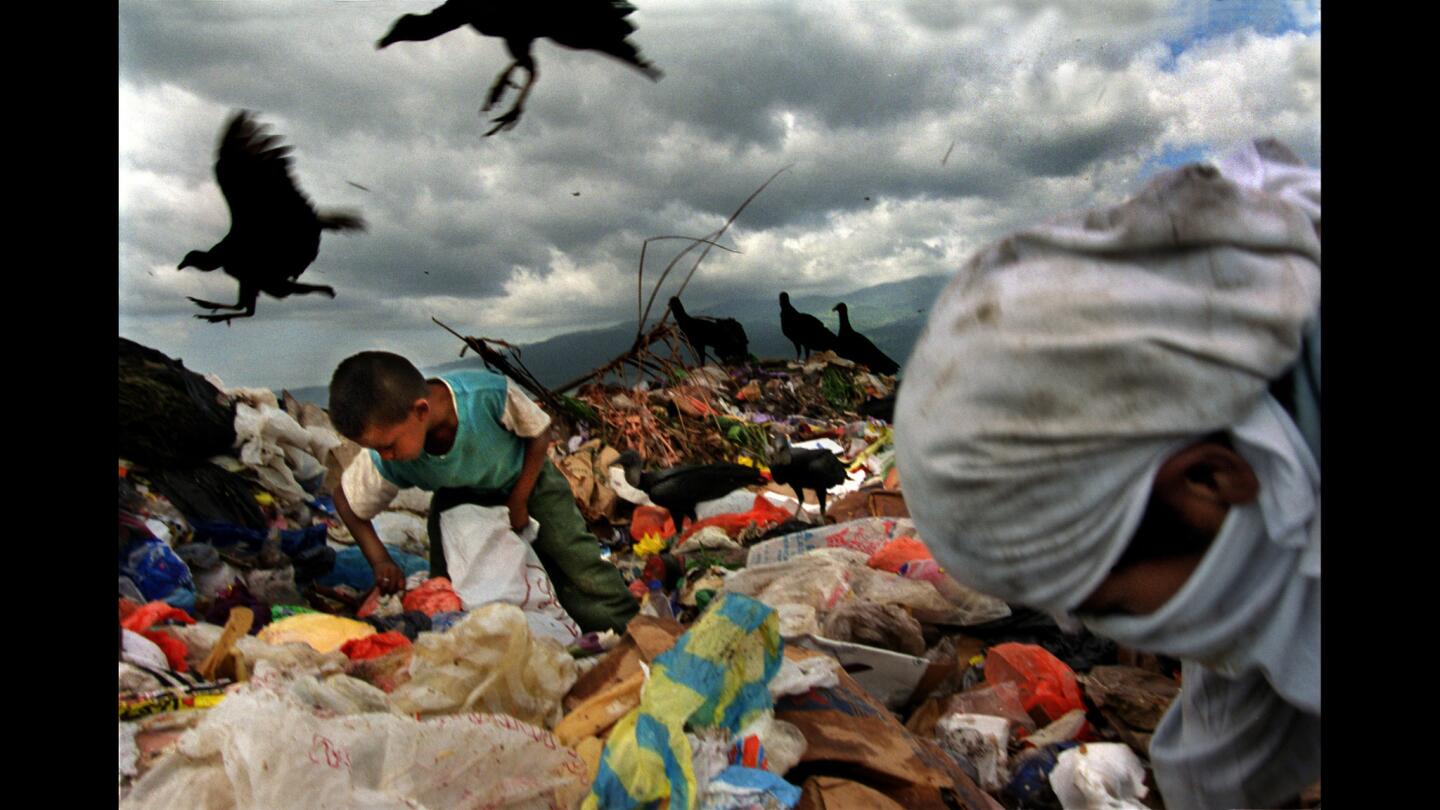
Buzzards and children are competitors for trash at the dump in Tegucigalpa. The same fate might have awaited Enrique without the money that arrived from the U.S. Still, he began to grow angry and rebellious. “I see so many children with mothers, “ he told his sister. “I want that.” (Don Bartletti / Los Angeles Times)
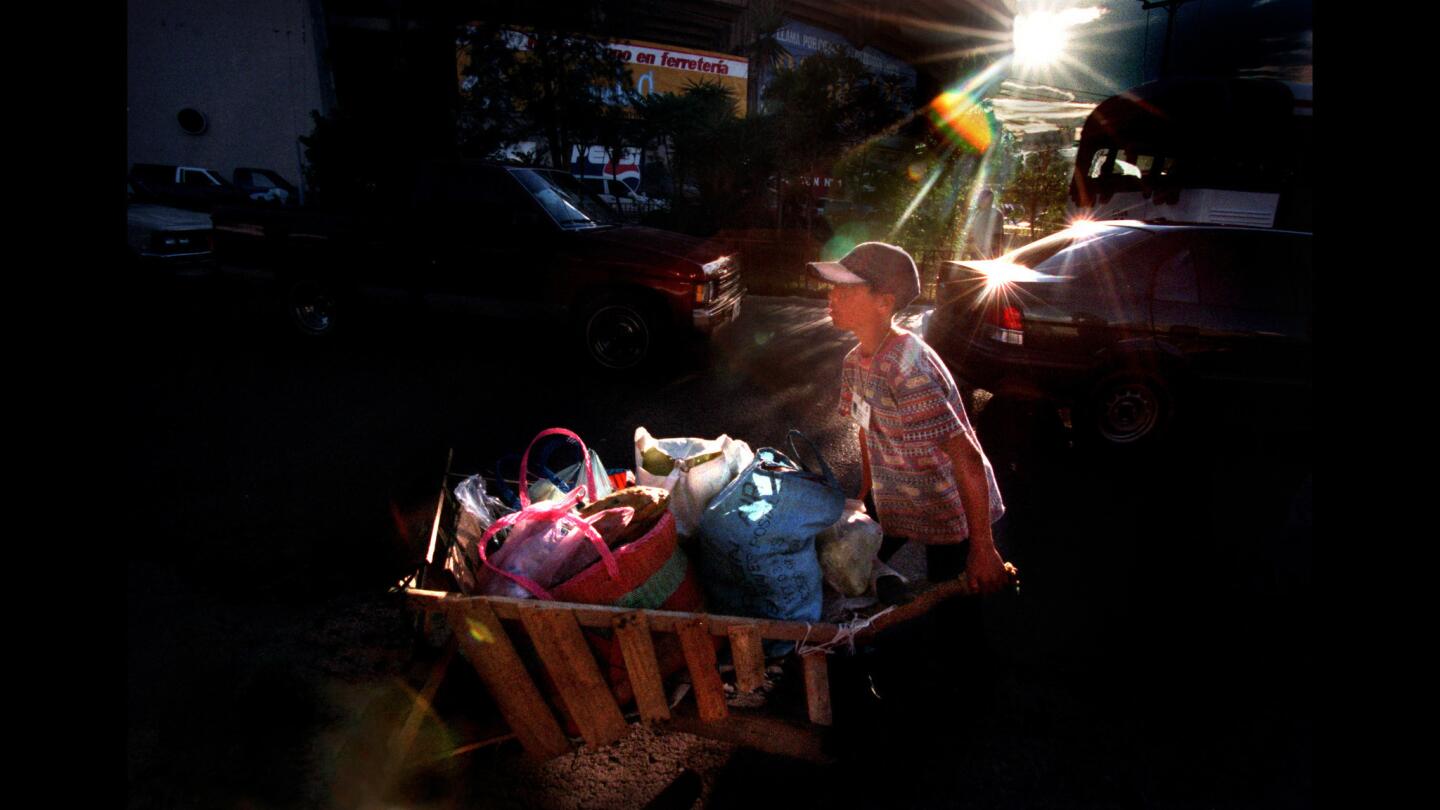
Elio Trujillo Martinez, 13, guides a wheelbarrow of groceries for tips in an outdoor market. Enrique also worked after school, hawking tiny bags of spices and darting between the wooden carts because he had no vendor’s license. He was 10 years old. (Don Bartletti / Los Angeles Times)
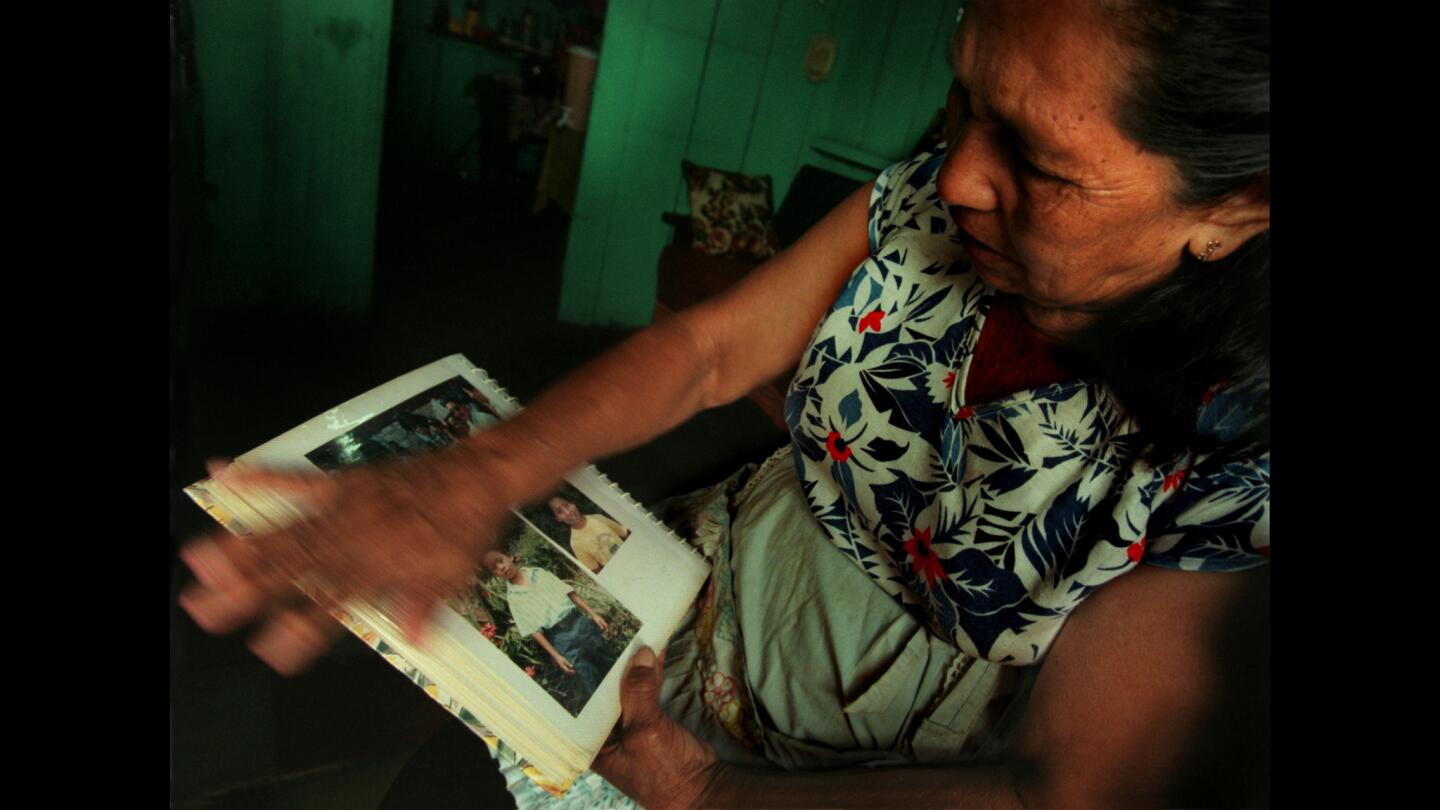
Maria Marcos looks at photos of grandson Enrique. As he began to rebel, she asked him: “Don’t you love me? I am going to send you away.” “Send me!” he said. “No one loves me.” (Don Bartletti / Los Angeles Times)
Advertisement
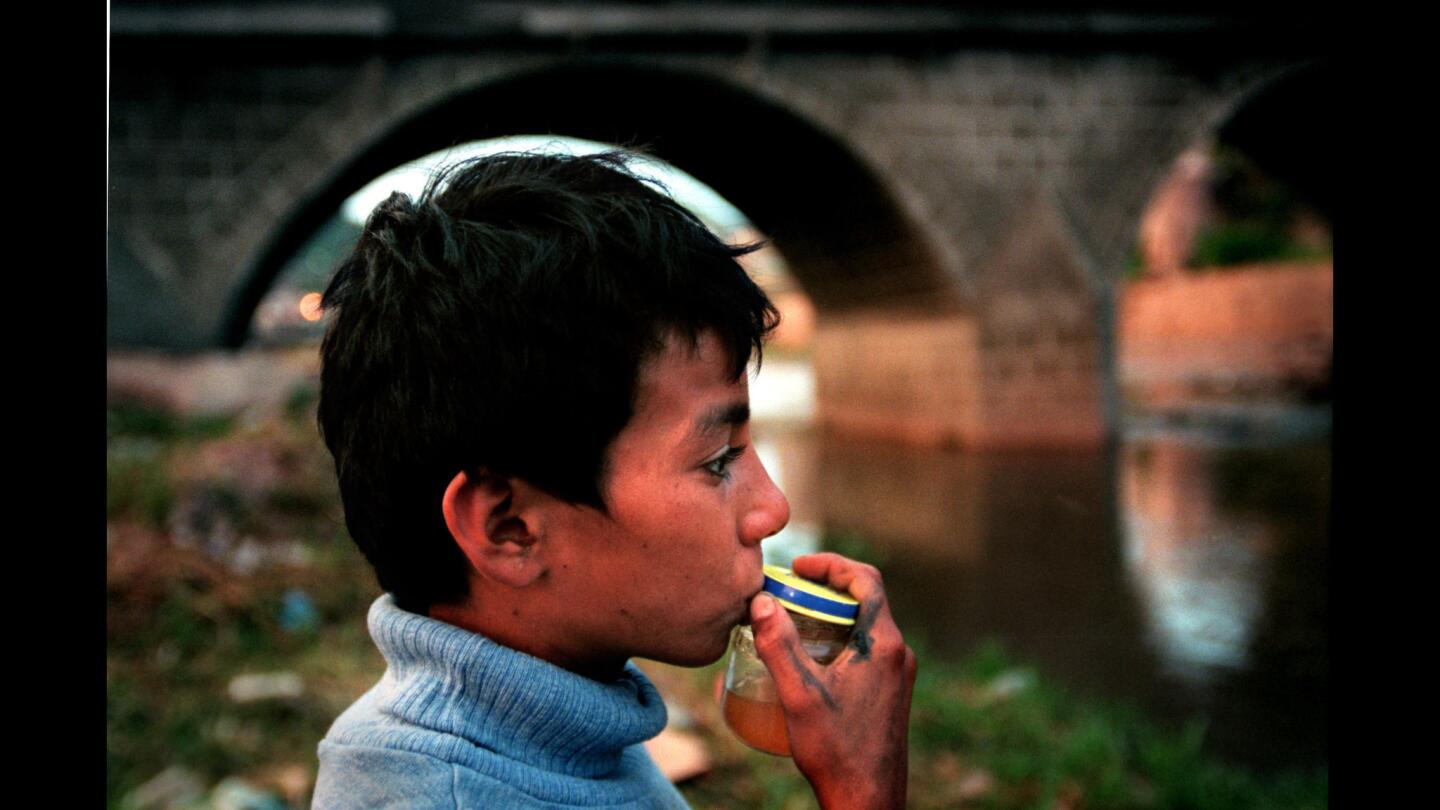
A homeless boy inhales contact cement fumes from a baby food jar. He lives under a bridge in central Tegucigalpa with other runaway children. Besides brain damage, the constant use of glue causes loss of appetite, dizziness, slurred speech and a carefree attitude. (Don Bartletti / Los Angeles Times)
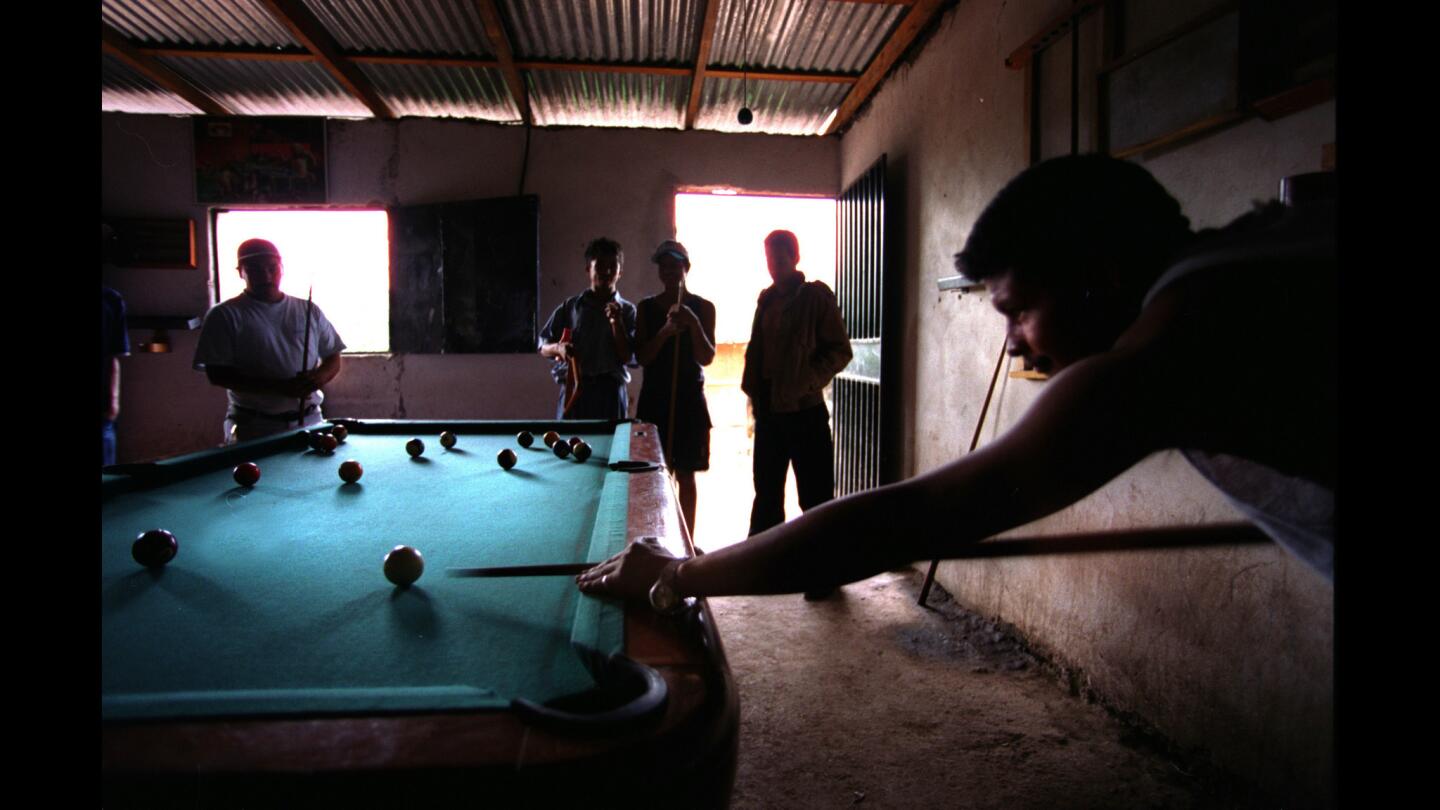
Locals play pool in the Tegucigalpa neighborhood of Colonia Suyapa where Enrique used to hang out before fleeing to the U.S. (Don Bartletti / Los Angeles Times)
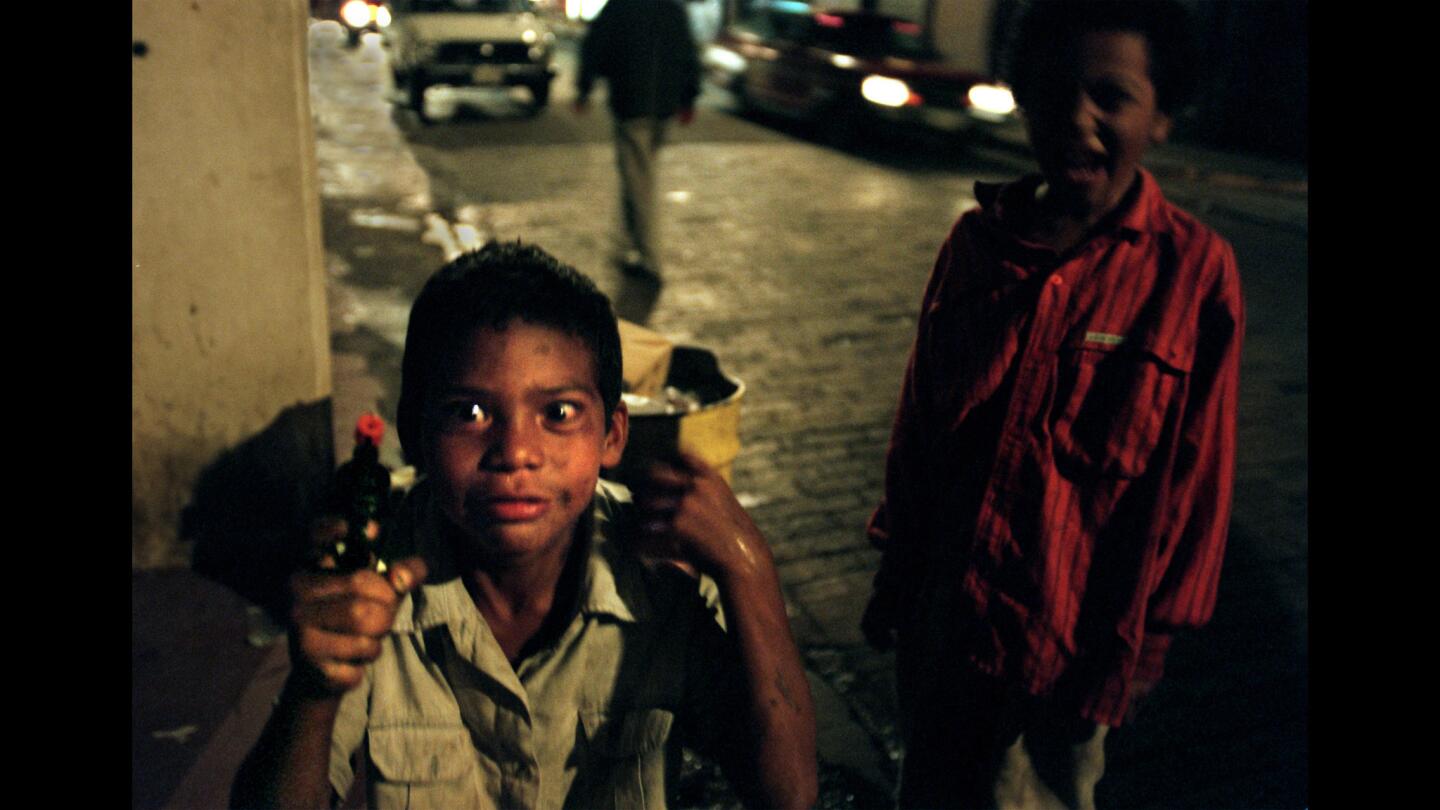
Richard Alberto Funez waves a toy pistol and tries to act tough, to the amusement of friend Alexis Joel Sanchez. In Richard’s other hand is a can from which he sniffs glue. Hundreds of drug-addicted homeless orphans roam Tegucigalpa’s streets scavenging for food and begging for money. (Don Bartletti / Los Angeles Times)
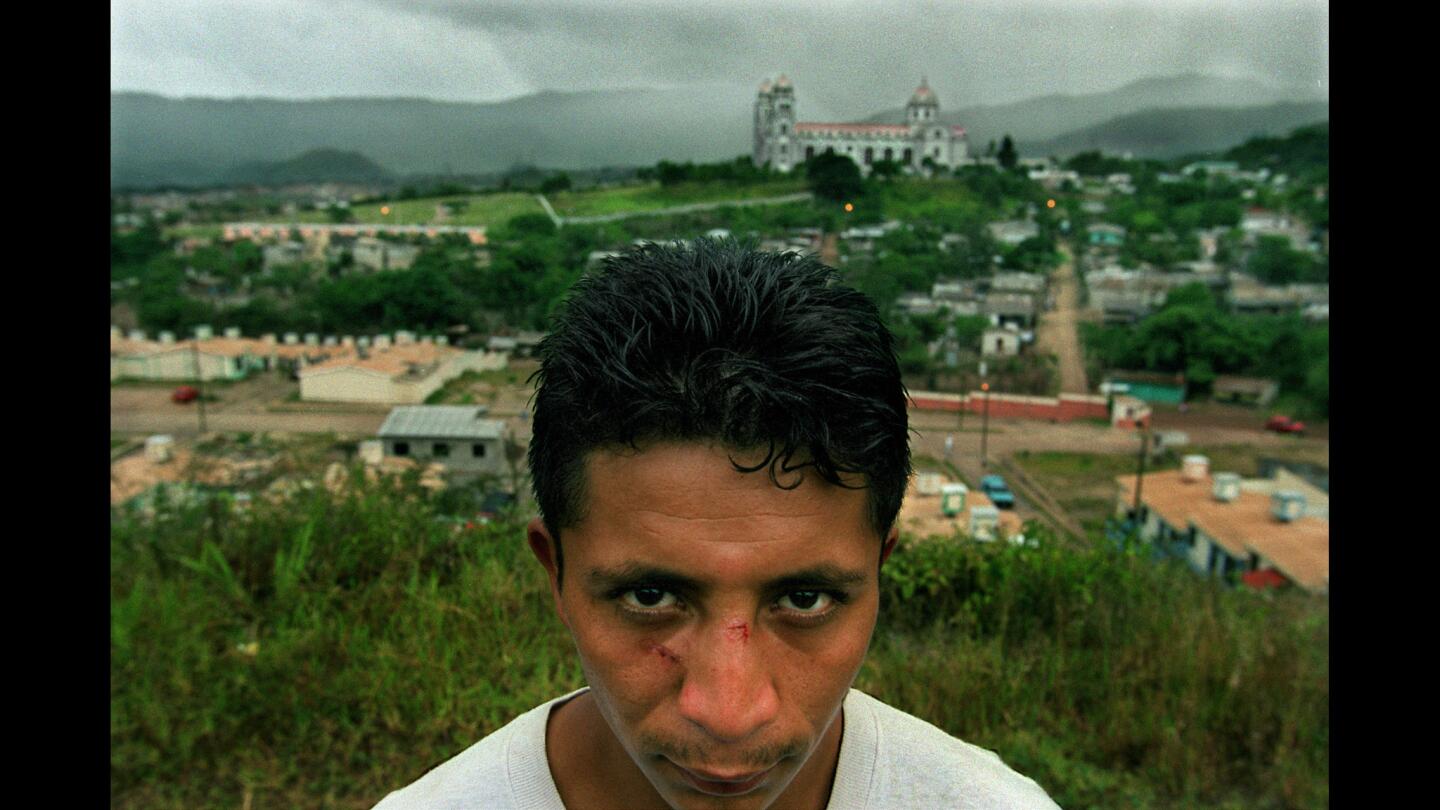
Jose del Carmen Bustamante, above, and Enrique tried train riding when they were 16. They took buses through Guatemala to Mexico, then hopped a freight in Tapachula. Jose was terrified. After they were caught, he chose to stay in Honduras. (Don Bartletti / Los Angeles Times)
Advertisement
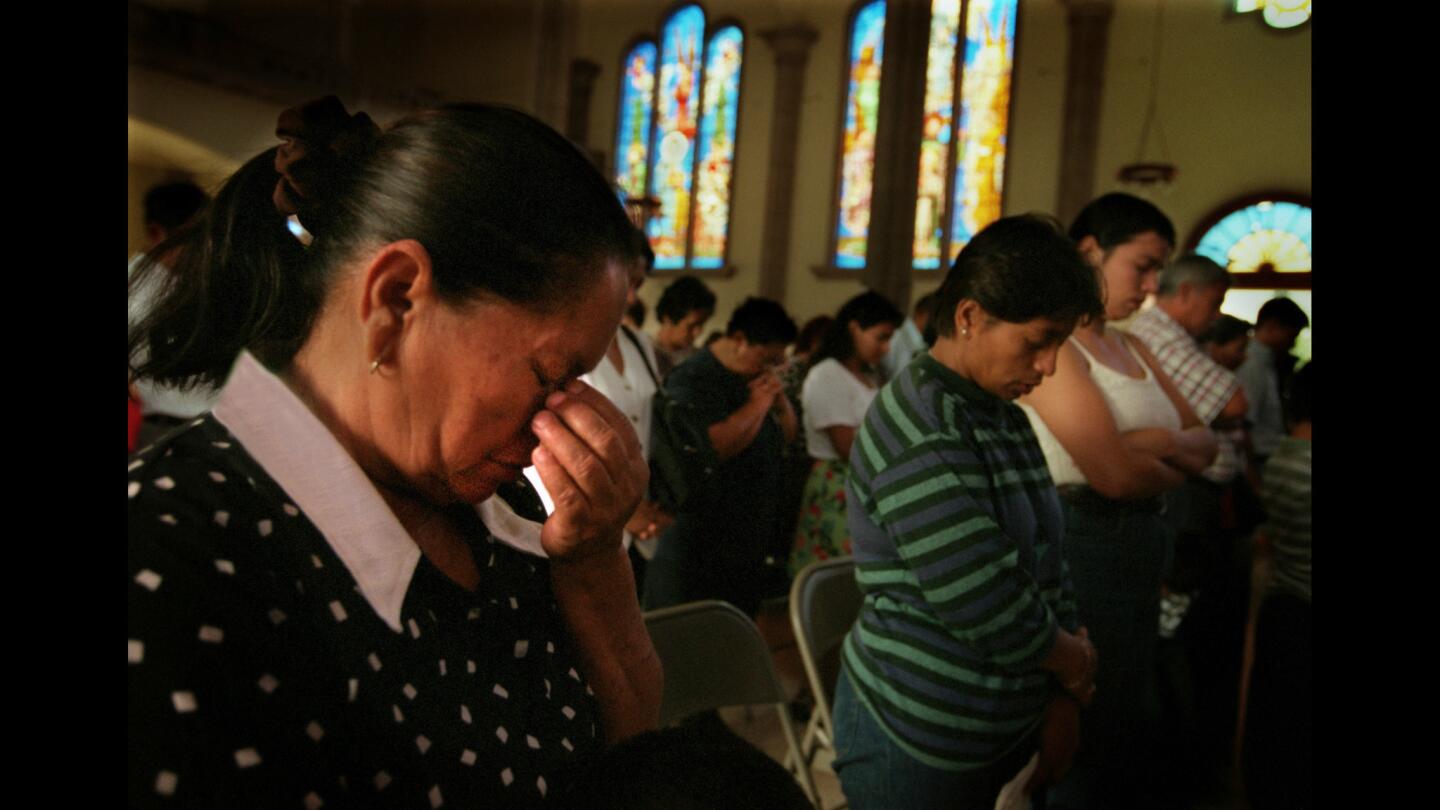
Agueda Amalia Valladares, left, and her daughter Rosa Amalia. After Enrique burglarized the family’s home, Agueda Amalia wanted her grandson to leave. (Don Bartletti / Los Angeles Times)



